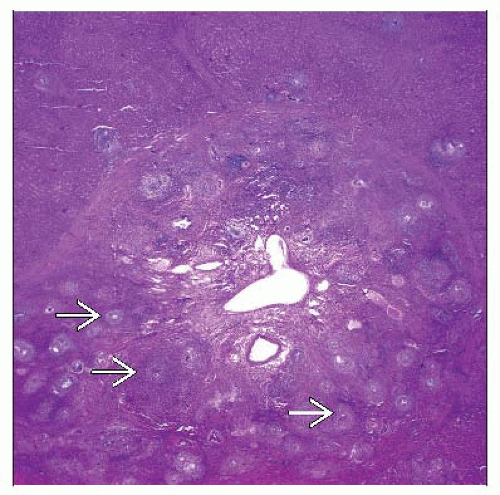Schistosomiasis
Joseph Misdraji, MD
Key Facts
Terminology
Hepatosplenic schistosomiasis is caused primarily by S. japonicum and S. mansoni
Clinical Issues
Cercariae exit snail, penetrate skin of vertebrate host, mature in lungs, and travel via blood to mesenteric veins
Adult flukes release ova into mesenteric venous plexus, some of which migrate into liver
Inflammation induced by ova leads to pyelophlebitis, periportal fibrosis, and noncirrhotic portal hypertension
Microscopic Pathology
Portal fibrosis with partial or complete destruction of main branches of portal vein and sparing of arteries and ducts
Ova with refractile shell and lateral spine
TERMINOLOGY
Synonyms
Bilharzia, bilharziosis, or snail fever
Katayama fever (acute schistosomiasis)
Definitions
Parasitic infection caused by flukes of genus Schistosoma
ETIOLOGY/PATHOGENESIS
Infectious Agents
Of schistosomes, Schistosoma japonicum and, to lesser degree, Schistosoma mansoni are most commonly associated with hepatic pathology
Morbidity is related to inflammatory response to ova trapped in host tissue
Stay updated, free articles. Join our Telegram channel

Full access? Get Clinical Tree






